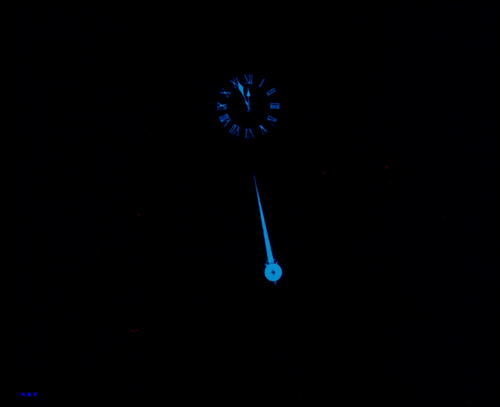
‘In 1940 the Museum of Modern Art (MoMA) Film Library actively began to document a rich international experimental cinema, and staged a show featuring the works of Hans Richter, Fernand Léger, Man Ray, Marcel Duchamp, Len Lye, Ted Nemeth and Mary Ellen Bute. Richter, Duchamp, Léger, Man Ray, and Lye – filmmakers working in Europe – have all become familiar names in any standard text of avant-garde cinema, and their films included in this show have become cinema classics. Mary Ellen Bute and her movies, however, are practically unknown today.
‘Such a fate was not unusual for prewar American experimental filmmakers. They worked in the 1930s and 1940s within a fragile support network and, after World War II, received only sporadic attention from serious film critics when a new generation of filmmakers achieved prominence. The individual filmmaker of the prewar era had to be not only a filmmaker but also a distributor, critic, and educator for an experimental cinema. The reclamation of the individual filmmaker can reveal a great deal about the definition and workings of an experimental cine- ma in the United States before World War II. Bute’s career exemplifies how the artist-filmmaker during this period successfully invented experimental cinema at both the individual and the systemic levels. She achieved an individual aesthetic style, separate and distinct from her European counterparts, and she devised strategies for the distribution, exhibition, and reception of experimental cinema in the United States.
Ten of Bute’s films, made between 1934 and 1953, belong to the category of cinema known as “abstract films,” “motion paintings,” or “experimental anima- tion.” They place Bute in a painterly-filmic tradition alongside Richter, Viking Eggeling, Oskar Fischinger, Lye, and Norman McLaren. Yet if Bute’s films today seem easily contained within a discrete aesthetic category and tradition of cinema, they were less easily situated within the contemporary avant-garde’s rigorous and exclusionary measures for film art. Unlike most experimental filmmakers before and after World War II, Bute did not explicitly claim an anti-Hollywood stance for her aesthetic principles. In- deed, she publicly situated her films not in resistance to Hollywood, but in conjunction with it, since she marketed her films as short subjects for commercial, theatrical bookings. In the 1940s and 1950s, Bute’s films opened for Hollywood features in Radio City Music hall as well as theaters across the country. It is, however, precisely this tension between the films’ elitist modernist aesthetics and their popular reception as pretty amusements that is worth further exploration.
‘Trained as a painter at the Pennsylvania Academy of Fine Arts in the early 1920s, Bute identified with the dominant intellectual preoccupations of the mod- ernist avant-garde. Like Richter and Eggeling in Europe, Bute tried to express movement and con- trolled rhythms in time-sequence paintings. Like Richter and Eggeling, she subsequently decided that painting itself was too limited a medium to represent time and motion. Throughout the 1920s and early 1930s, she extended painterly concerns to music and light so as to represent the kinetics of modern, fast-paced, highly technologized life. Like many other painters, she understood that such concerns were within the mainstream of contemporary art, the logi- cal outcome of a linear tradition established through Paul Cézanne’s abstractions of form and color, Cubism’s attempts to produce “surface sensations to the eye,” the Italian Futurists, the American Synchronists, and Wassily Kandinsky’s paintings of relationships between colors and music, works that Bute herself called “abstract compositions based on an arbitrary chromatic scale of senses.”
‘After she graduated from art school and moved to New York City, Bute attempted to transcend the limitations of painting through combining theatrical performance, music, colored lighting, and two dimensional pieces in stage lighting and design. She at- tended the Yale School of Drama, and following her graduation in 1925 and a subsequent trip around the world as a drama director for a “floating university,” Bute worked with the inventors of the new light organs, musical keyboard instruments that could simultaneously produce and create moving colors on a screen. From the Russian physicist and color organ inventor Leon Theremin, in particular, Bute developed a sophisticated orientation to art as an elaboration of the scientific phenomena of color and light. Theremin taught her to use light on a static surface and how not to use light haphazardly. While Bute was working with Theremin, a third person joined the team. Russian-born Joseph Schillinger ranked among America’s most sought-after composition teachers for his methodology which reduced musical elements to geometric relationships. Schillinger’s students included popular music icons Tommy Dorsey, George Gershwin, and Glenn Miller. With his application of mathematical concepts to music composition, Schillinger taught Bute a central means by which she could coordinate musical composition with painting in shared terms of light, form, time and color. Bute went on to apply concepts from her collaborative experimentations with Theremin and Schillinger in her own “absolute film” titled “Rhythm in Light” (1934).
‘Bute’s four films released between 1940 and 1950 represent a third phase of “absolute films” and the most mature of her drawn films. Textual inscriptions that introduced each of these films marked Bute’s cinema as educationally edifying by announcing the film’s intention “to present a new type of film-ballet.” Such titles presented Bute’s cinema from the outset as promoting appreciation for tunes already popularly canonized as acceptable highbrow music.
‘“Tarantella” (1940) is a five-minute color film animat- ed from more than seven thousand drawings and set to original piano music performed by Edwin Gerschefski. Bute positioned her short films in commercial movie theaters as toney introductions, “class” or “art” acts that would precede specific Hollywood prestige productions. “Tarantella” opened for “Paris Waltz” at New York City’s Paris Theatre, where Bute’s original animation art was displayed in the lobby.
‘The commercial premieres of Bute’s films often occurred a few years after their completion. But if the films did not always win immediate commercial success, they enjoyed longevity without regard for timeliness or topicality. Bute attributed their long runs to the films’ abstract nature: “It’s just like music. You can see it over and over.”’ — Lauren Rabinovitz
___
Stills
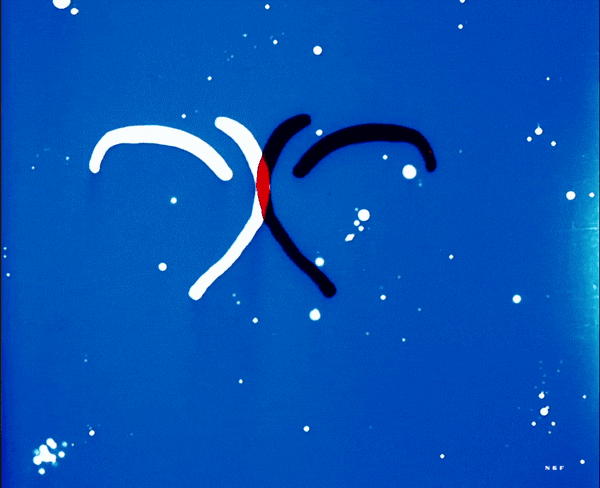
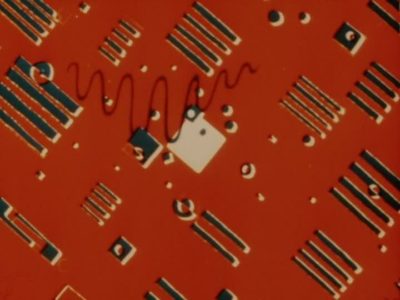
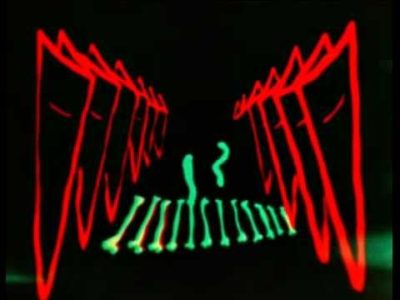
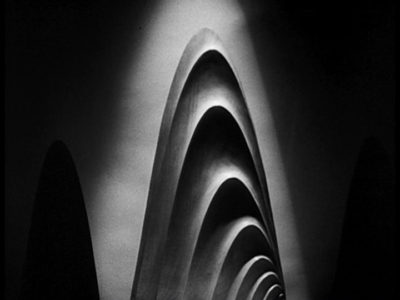
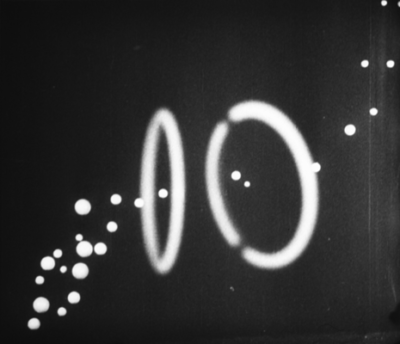
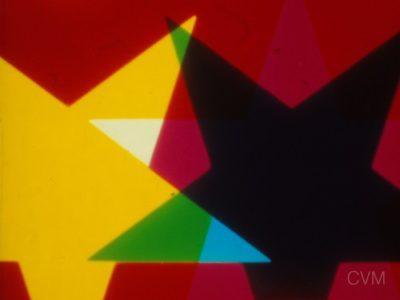

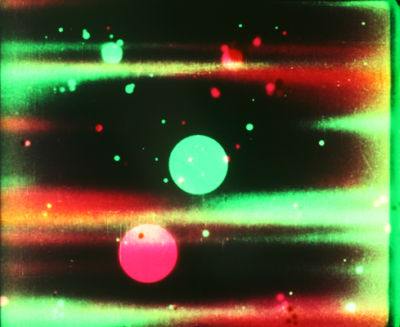

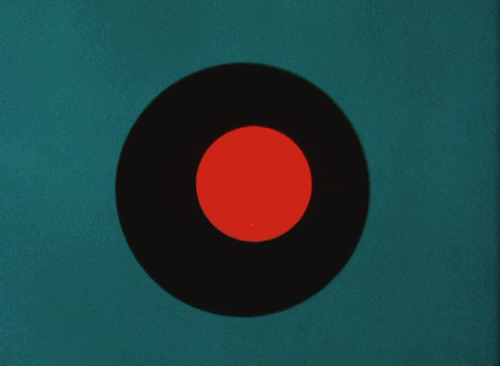

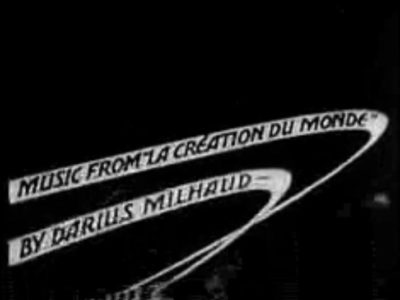
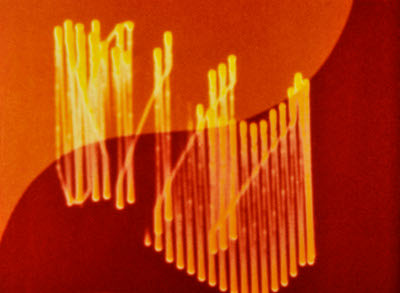
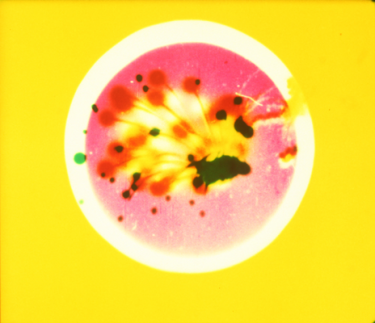

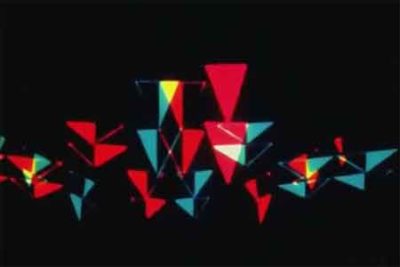
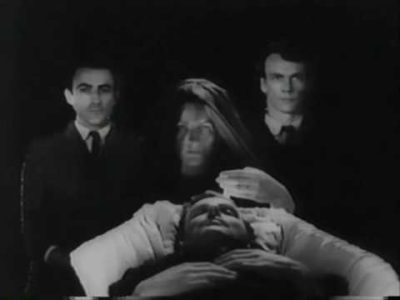
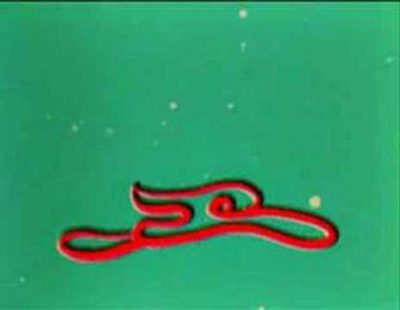
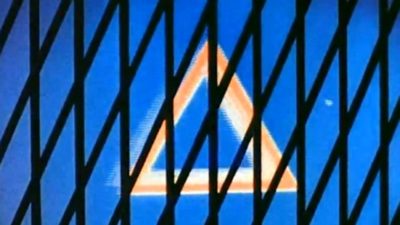


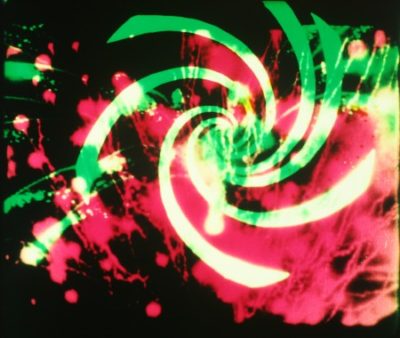
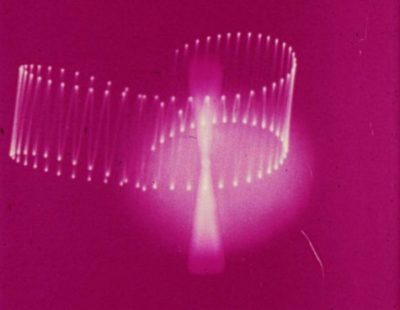
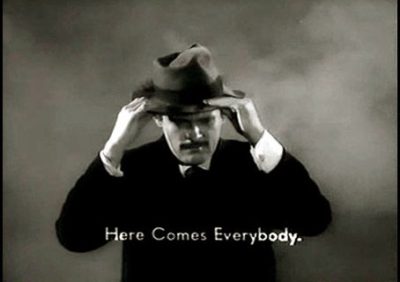


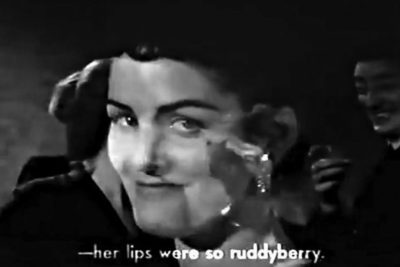
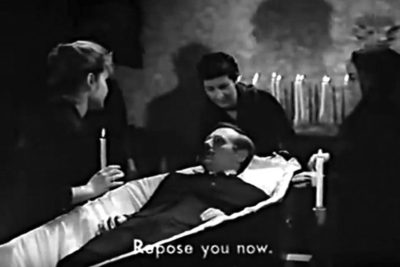




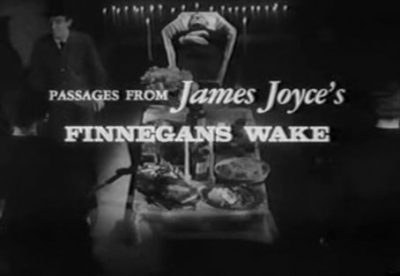

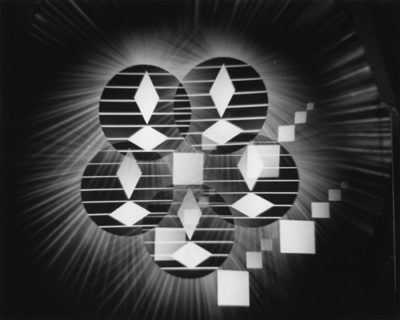


___
Further
Mary Ellen Bute @ Light Cone
CVM’s Bute Research Pages
Mary Ellen Bute: Seeing Sound
MEB @ IMDb
The Films of Pioneering American Animator Mary Ellen Bute (1930s-1950s)
Mary Ellen Bute: “Film Pioneer”
Expressive Motion in the Early Films of Mary Ellen Bute
Mary Ellen Bute Papers @ Yale University
Book: Mary Ellen Bute, Pioneer Animator
MEB @ The Heroine Collective
MEB @ letterboxd
Seeing Sound – Mary Ellen Bute tribute.
This Animation Pioneer Turned Music into Pure Light
The River’s Roar: Mary Ellen Bute’s Passages from James Joyce’s Finnegans Wake
MEB @ Sketch Gallery
The Possibilities of Animation as demonstrated by Mary Ellen Bute
MEB @ MUBI
Mary Ellen Bute’s Synchronization of Sound and Image
Experiments In Love and Film: The Wondrous Work of Movie Explorers Mary Ellen Bute and Ted Nemeth
The visual music of Mary Ellen Bute
____
Extras
Mary Ellen Bute according to the BBC
Mary Ellen Bute: Mother of Animation
Mathematical Beauty: Visual Music by Mary Ellen Bute
____
Interview
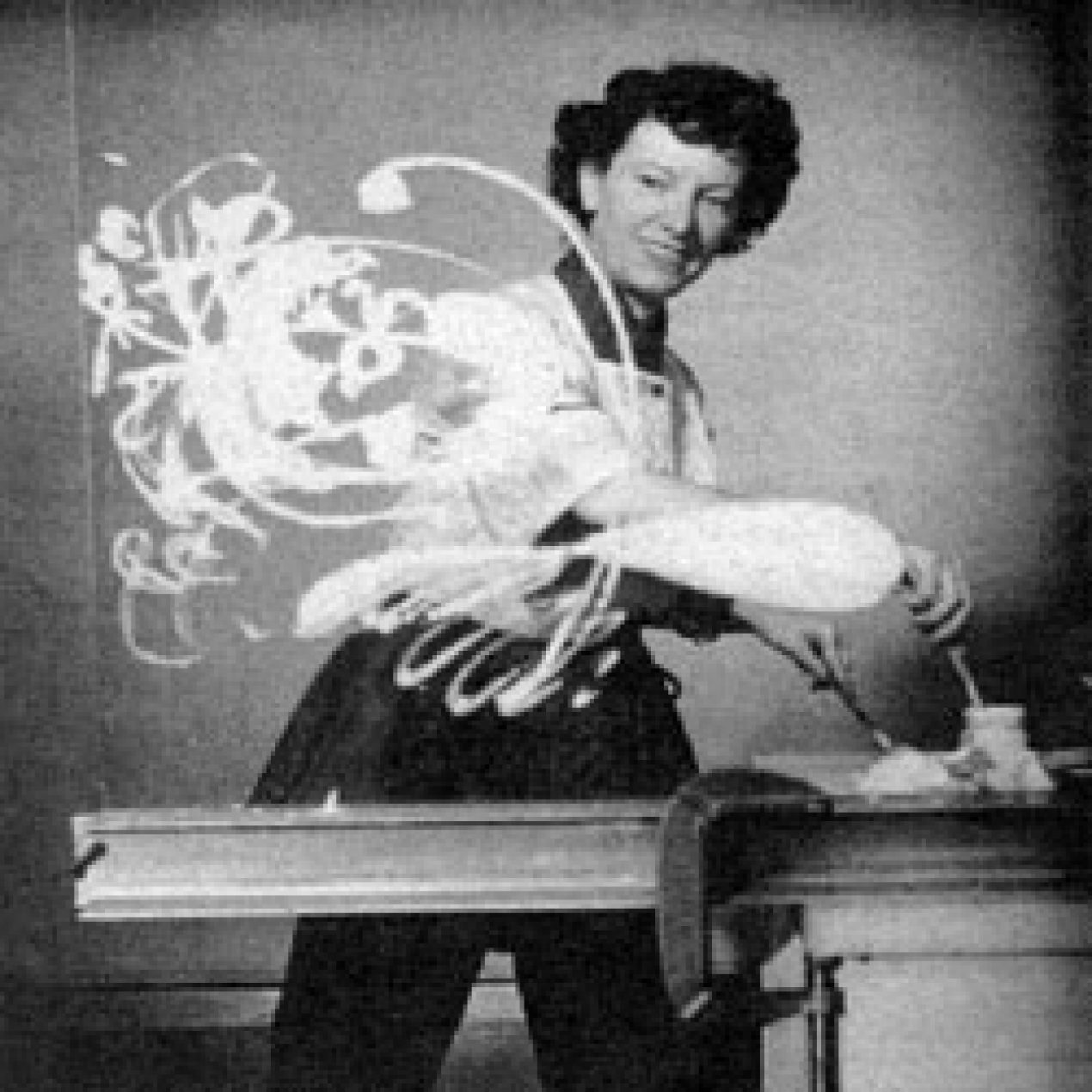
For ten years or more, avant garde film maker Mary Ellen Bute sat on the front row of Society meetings. Her full-length film, Passages from ‘Finnegans Wake,‘ was adapted from the Barnard College production of Mary Manning’s work by the same name. Conceived and carried on in concert with Frances Steloff, Padraic Colum, and other Joyce Society members, it remains the most innovative cinematic interpretation of the spirit of Joyce’s last work ever attempted.
Bute addressed her response to those who questioned her apparent shift from abstract film to Joyce in the biographical note for the New York Film Association:
“I am often asked how I moved from abstract films to Finnegan’s Wake? It’s plausible…Joyce’s premise: ‘One great part of every human existence is passed in a state which cannot be rendered sensible by the use of wide-awake language, cut-and-dry grammar and go-ahead plot’ is, like abstract films, about our ‘inner’ landscape. Joyce, like Whitman, and much Art, is about the essence of our Being; so, we’re traveling on the same terrain.”
And in an interview about the film with Gretchen Weinberg for Film Culture in 1964 she described herself as:
“a Finnegans Wake girl . . . I may never do another Joyce work but I would like to make several films on different aspects of Finnegans Wake, . . Several people have already prepared treatments which could easily be adapted for this , . . Joyce
loved the movies and hoped his works would be filmed.”
In the Camera Three interview we have the opportunity to hear Bute recount her interest in the Wake directly. She explains that she was “first exposed” to the Wake at a friend’s ranch in Texas and was immediately drawn to the singular response each reader could bring to the work, and that she was immediately struck by its visual potential.
“The whole feeling that you were on your own in Finnegans Wake was very encouraging,” she says.
She took Professor Tindall’s course and eventually saw the Barnard production of Mary Manning’s play “Passages from Finnegans Wake”. Manning, a childhood friend of Samuel Beckett’s, was a founder of The Poets’ Theatre in Cambridge. Bute was attracted to the humor of the play & realized that, for copyright reasons, it would be easier to produce her film from the play than from the original Wake. Eventually Manning helped co-write the film treatment and the script.
The interview also affords a chance to see the noted scholar Tindall discuss Finnegans Wake as well as his reactions to Bute’s film. Before the start of the Joyce Society, Frances Steloff had arranged for Tindall and noted book collector James Gilvarry to offer unofficial instruction to those who were new to Joyce’s work.
When host Macandrew asks him to describe Joyce’s Finnegans Wake to the t.v. audience, Tindall replies that:
“Nothing could be easier to describe. It’s about everything and everybody at all times… Read it closely, scratch your head, and there it is.”
Bute the Joyce aficianado comes through clearly as she discusses not only the time commitment to completing the film but the nuances of Joyce’s text. When Tindall discusses Finnegans Wake as being a story about a family she explains that:
“We did take this family story that Mr. Tindall spoke of just now. . .You see, Shem and Shaun, as well as being Finnegan’s sons, are also conflicting parts of himself. He has to come to terms with these parts–realize the excesses–in order to wake up. I was very eager to do the waking up part of Finnegans Wake–you know, the part where Joyce says ‘it’s the problem passion play of the millentary going strong since creation.'”
Tindall is complimentary about Bute’s film and explains that even though Finnegans Wake “appeals to the ear,” Bute has “translated, transformed and transfigured it into visual form.” And that the problem of “selection and condensing the material took fortitude.”
But in spite of this “fortitude,” one later senses that Tindall can’t dismiss his respect for the written text so easily. In a particularly compelling part of the interview, Macandrew asks Bute if the language used in the film was a problem, because the actors were essentially ‘speaking words that had never existed before.’
Bute replies that she was delighted with the cast:
“You see it’s an Irish cast. Most had had great experience. And you know how Joyce, among other things, wrote the Irish dialect into many of the words. If they’re pronounced the way they’re spelt they come out with a bit of an Irish brogue with a Dublin lilt. And this cast was theater trained–none of them had been under the camera before and that was very nice. We took the shooting script and rehearsed it like a play from start to finish and for quite a while til they got the rhythm and the whole thing going. Then I broke it down into sequences and shots and put it under the camera.
By that time they were ordering coffee and discussing groceries in Joycean.”
When John Macandrew comments that he feels that the use of subtitles is a “tremendous bridge” for the audience, Bute pleasantly responds with:
“It makes it so much more entertaining when you see..if one of the celebrants says ’tis really the truth’ and you see ‘Tis (she spells out) ‘R,’ ‘A,’ ‘R,’ ‘E,’ ‘L,’ ‘Y’ the truth.’ It’s much funnier than if you just think it’s a British pronunciation of ‘really.’ You see?
And throughout if it’s a ‘wallstrait oldparr’ then you know that the actors are saying what you think they’re saying.”
Bute laughs delightfully, but at this point the discussion becomes a bit energized as Tindall the literary scholar objects and we perhaps get a sense of the mentor the Joyce initiates experienced at the Gotham Book Mart: “But how are you going to understand what ‘oldparr’ means? That takes 15 minutes of contemplation and this goes right by….”
Bute interrupts: “But now you know how we do that–we have him falling out of bed so it’s visual, it’s being said….”
Tindall interrupts: “Wall Street…..falling off a wall…..wall street crash….par value stocks….’oldparr?'”
Bute shakes her head: “Oh now please, we had to simplify it a little. But we did have a montage of all that.”
Tindall still objects that the viewer “cannot get more than a little fleeting part of this tremendous whole and that’s the problem.”
At this point Mary Ellen Bute concurs, but we know from watching the film with its energized editing techniques & inclusions of such modern day images as television screens & rockets that she took seriously her belief that one could come to Finnegans Wake on their own terms. In her 1964 Film Culture interview with Gretchen Weinberg she pointed out that “the film is not a translation of the book but a reaction to it.”
The interview contains other tales of her experiences with the film. She says she had one typical “Joycean” calamity after another, and describes calling Erik Barnouw of Columbia University to come down for a screening. She apologized that the film took so long to make–after all it was in preparation for 7 years. But she is obviously delighted in relating Barnouw’s response that “it would be presumptious to do Joyce too fast!”.
The interview concludes with a few segments from the film. Mary Ellen Bute must have been satisfied with the outcome of the film, because in that same year it won a prize at Cannes for best feature film debut.
____________
10 of Mary Ellen Bute’s 17 films
____________
w/ Ted Nemeth, Melville Webber Rhythm in Light (1935)
‘Premiered at Radio City Music Hall, 1935. In RHYTHM IN LIGHT, the artist uses visual materials as the musician uses sound. Mass and line an brilliant arabesques from the inexhaustible imagination of the artist perform a dance to the strains of Edvard Grieg’s music. The visual and aural materials are related both structurally and rhythmically – a mathematical system being used to combine the two means of expression.’ — Light Cone
the entirety
_____________
Synchromy No. 2 (1936)
‘Kaleidoscopic arches, classical busts, and swirling staircases drift comfortably in time with Richard Wagner’s “The Evening Star,” gently melting and flowing along with the song. Oddly (at least for this viewer), neither the music nor the imagery command your full attention. Rather, the film seems to encourage the melding of the senses: sight and sound weave together into a shared expression. When the five or so minutes are up, it’s hard to decide how to categorize what you’ve just experienced. Was it animation set to music, or music set to animation?’ — Stylus Radio
the entirety
__________
Dada (1936)
‘One of the livelist of Mary Ellen Bute’s abstract films, DADA was intended to be part of a Universal Newsreel segment, showing Bute and her partner Ted Nemeth at work in their tiny New York studio. No copies of the newsreel itself are known to exist at this time.’ — Cecile Starr
Excerpt
____________
Synchromy No. 4: Escape (1937)
‘Beginning with Escape, Mary Ellen began to work in color, and used more conventional animation for the main themes in the music, but still combining it with “special effect” backgrounds–sometimes swirling liquids, clouds or fireworks, other times light effects created with conventional stage lighting, such as imploding or exploding circles made by rising in or out a spotlight.’ — awn.com
the entirety
___________
w/ Ted Nemeth Parábola (1937)
‘Sculptor Rutherford Boyd worked in collaboration with Nemeth and Bute, whose NYC production facilities were placed at his disposal. Filmed, frame by frame, in a sequence of stills that varied the arrangement of sculptural pieces under controlled illumination, PARABOLA introduced the potential of a new design technique.’ — Douglas Dreishpoon
the entirety
____________
Tarantella (1940)
‘This new medium of expression is the Absolute Film. Here the artist creates a world of color, form, movement and sound in which the elements are in a state of controllable flux, the two materials (visual and aural) being subject to any conceivable interrelation and modification.’ — letterboxd
the entirety
_____________
w/ Norman McLaren, Ted Nemeth Spook Sport (1940)
‘Animated by McLaren, utilizing his adroit ink-on-film technique, Bute’s film visualizes Saint Säen’s music. It features colored globes, ellipses, and triangles that move ghost-like over monochromatic backgrounds, communicating the notion of spirits rising from a graveyard. Commercially Bute’s most successful animation, it ran for months at Radio City Music Hall.’ — Jan-Christopher Horak
the entirety
______________
Color Rhapsodie (1948)
‘Many pieces of music may share exactly the same mathematics quantities, but the qualities that make one of them a memorable classic and another rather ordinary or forgettable involves other non-mathematical factors, such as orchestral tone color, nuance of mood and interpretation. In Mary Ellen’s weakest works, like Color Rhapsodie, she is betrayed precisely by this problem, using gaudily-colored, percussive images of fireworks explosions during a soft, sensuous passage–perfectly timed mathematically, but unsuited to mood and tone color.’ — awn.com
Trailer
_____________
w/ Ted Nemeth Abstronic (1952)
‘I wanted to manipulate light to produce visual compositions in time continuity much as a musician manipulates sound to produce music. It was particularly while I listened to music that I felt an overwhelming urge to translate my reactions and ideas into visual form that would have the ordered sequence of music.’ — Mary Ellen Bute
Trailer
____________
Passages from James Joyce’s Finnegans Wake (1965)
‘A dead man lies in a coffin. Mourners drink and dance around him. Suddenly, the man sits up. The mourners push him back down. Thunder cracks. Buildings collapse. A bride runs through the city streets. Roses float on the water. These high-contrast black-and-white images, in evocative collage, make up the texture of Mary Ellen Bute’s 1966 film Passages from James Joyce’s Finnegans Wake. Filmed in Dublin and the Ted Nemeth Studio facilities in New York, with an Irish cast, it was a labor of love for Bute, a longtime member of the James Joyce Society, who made her name as an experimental abstract animator in the 1930s. Bute collaborated on the screen treatment with Irish actress and playwright Mary Manning, who had already done an adaptation of the book for the stage. Further work on the script was done by Bute, Ted Nemeth, and Romana Javitz.
‘Passages is an attempt to re-create the book’s linguistic inventions through the use of montage, collage, and music. Since Finnegans Wake is about a man going to sleep, it’s almost the platonic ideal of “universal.” Bute was fascinated by the malleable quality of the text, how each reader has a unique “way in.” The text shifts, depending on your entry point. Bute’s version has aspects of a variety show: she incorporates theater, singing, magic tricks, soliloquies, a burlesque bump-and-grind. She even includes a “television commercial,” with a woman advertising cold cream while lying on a zebra-striped rug. In a 1964 interview with Film Culture, Bute said, “The film is not a translation of the book but a reaction to it.” Yet there’s not a word in the film that’s not in the book. One of her most important choices was to use subtitles, showing Joyce’s spelling of what was being said on screen. It makes the point that Finnegans Wake’s language may look incomprehensible, but when spoken out loud it’s really quite clear.
‘Bute’s film played at Cannes. Some scholars chastised her for dragging Joyce down into the muck, but such snobs ignored his love of pop culture. (Mutt and Jeff are recurring characters in Finnegans Wake, after all.) Joyce was fascinated by cinema, too. In the early 1900s, while living in Trieste, he decided to bring the exciting new art form to Ireland, and so he started the Cinematograph Volta, operating in Dublin. His involvement was short-lived, but it shows his interest in the “now,” in the future—in art for all, not just the elite few.’ — Sheila O’Malley
the entirety
*
p.s. Hey. ** JM, Hi, J. I trust your government from afar and figure they’ll sort it. Our cases are going up now, and new/old restrictions are looming ominously on our possibly immediate horizon. I agree about the word ‘slut’s’ potential affability. Ooh, Gary Lutz, yum. Take care, pal. ** Natty Soltesz, Natty! I know, how about that? (The Lucille Ball reference). Dude, how good to see you! We can meet up here, and we do, at the least for now because things are starting to downswing. Yes, good timing on the Paris visit. It’s still great Paris — at the moment at least — even under the circumstances, but fuck knows when anyone in your neck of the world will get to visit again. I didn’t know you have a Patreon. I’ll find it. I had a couple of Patreon things I was following, but I bailed on them for forgotten reasons. Yes, Aaron Brown actually directed or co-directed three short videos/films based on stories of mine in ‘Ugly Man’ for Dazed and Confused a few years ago under the moniker Focus Creeps, and they were quite good. They might still be online, I’m not sure. Yeah, scary but uninteresting fantasy seems really, really big in the States right now. Man, you take care, and I’ll go seek out your Patreon, and please come back any old time. ** Bill, If I had known in advance of the real world hotness you were going to deal with this past weekend, I would have looked for escorts with an ice water effect. Not sure how that would work. At least with the Europe escorts, I think things got chill enough that the pandemic stuff was understood, but now things are getting spooky over here again, and references to it are becoming voluminous again based on my recent hunts. Did you stay sufficiently hydrated? ** David Ehrenstein, I think you would need to pay Michelle to get him to tell. ** Misanthrope, Doesn’t seem weird to me. But if it feels weird, it’s weird, right? ** Prince S, Hi, Prince S. Oh, it’s you! Hi, G. Yes, damn good writers in some cases. I’m always making notes and outright swiping things here and there from them. How are you? Enjoying the blissful lack of high heat like me? ** JoeM, I’ll see your ‘indeed’ and raise you a ‘but of course!’. ** Steve Erickson, Were they? Unusually wordy? I wonder if those QAnon weirdos are still monitoring my blog? They would have had a field day this weekend. Congrats on your museums reopening. Very happy to have ours back at work. At least for now. Especially during the recent heatwave. ** Nick Hudson, Hi, Nick. Oslo, very nice. You gonna see Kier? That ‘UBEB’ must be quite the rarity now. I think that’s the one piece of Gisele’s and mine that will never be revived. One by each? Okay, but these are totally personal fave/subjective picks. Robbe-Grillet: (that’s tough) my fave is ‘Recollection of the Golden Triangle’. Simon: My fave is ‘Triptych’, an odd but very genius one. Pinget: That’s easy, ‘Fable’. So far the only new restrictions are that we have to wear masks outdoors in certain, more populous and touristy areas of the city. But I think harder restrictions will be coming soon. Safe trip, stay well, have fun. ** Rafael, Hi, Rafael. I find them on a number of sites, but I do certain things with the profiles to alter/obscure and protect their identities, so one would probably need to have Sherlock Holmes-level skills to actually find them out there. Thanks for coming in. Take care. ** Right. Today the blog celebrates the works of the great and undervalued (by reasons of misogyny, clearly) filmmaking pioneer Mary Ellen Bute. Please figure her out and enjoy doing so. See you tomorrow.




 Now available in North America
Now available in North America 
Great to see this Mary Ellen Bute Day. She was the central figure of the “Joyce Society” ladies that hung with Miss Steloff at the Gotham Book Mart — many of whom had not actually read Joyce.
My favorite Robbe-Grillet novel is “La Jealousie” but I prefer his films. Not “Marienbad” (which is more Resnais than R-G) but rather the magnificent “Glissements Progressif du Plaisir” He’s Sade’s wacky nephew, IMO.
Dennis, All of which reminds me that I need to read Finnegans Wake. 😮
The only Joyce I haven’t read, and mainly because I’m scared.
Well, I’ve never appreciated porn in the way that, say, you do. It was just a tool, so to speak. I’ve never been into more extreme forms of porn either. Like, I’ve never been like, “Hmm, I need something more extreme/violent/fucked up/whatever for my enjoyment.” Just never interested me or did anything for me, other than knowing about such things and being able to write/talk about them. Otherwise, except for a new, really cute model, it’s all kind of the same after a while. Seen one of those, pretty much seen them all.
So yeah, not that weird. 😀
Oh, I love the stills! Mary Ellen Bute sounds awesome. This post made me miss our pre-corona Avant-garde film sessions at uni; during the last one we watched Maya Deren’s Ritual in Transfigured Time, which I now know is one of your fav films… I’m okay, thanks for asking. Preparing for a new term of teaching, so trying to get as much reading and writing done as possible. Yes, the post heat-waved weather has been blissful indeed! I adore this thunderous weather; even find it a bit punk, gothic, or something for some reason. I have to say reading Ugly Man has definitely improved the quality of my week; finished it over the weekend and I’m just amazed at how you’ve sculpted and explored the short story as a form. Will post about this later, as I need to share the joy. I will look for the films, I hope I can find them. Have also been reading and loving extracts of The Weaklings… is there a possibility it could be reprinted? It’s almost impossible to find copies to purchase. I mean there are some first editions available on AbeBooks for like 300 pounds or something. I mean I’m sure it’s worth it and I might have to splurge if I don’t find more affordable options, but I would also like to have the option of gifting copies to others… anyway, I hope you’re having a lovely, blissful day xoxo
Hi Dennis,
Wow to Mary Ellen Bute !! This will definitely be on the required viewing list in my syllabus for the coming Fall semester.
It’s Matt Doyle – been lurking on and off a bit the past few months, and Bute was a fitting occasion to drop in and properly say “Hi” (I also am diving into Alice Knott after seeing it recommended here). I’m glad to hear from my lurking in the P.S. that Paris is well, and seems to be weathering the pandemic relatively sanely. Over here in L.A., it’s Dodger Stadium nasal swabs with no end in sight.
Recent news; Went to Sundance with collaborator Theo Triantafyllidis, debuting a mixed-reality play based on Connor Willumsens ‘Anti-Gone’. Do you know the graphic novel? Connor is a really exceptional artist and writer. Really highly recommend.
I produced, adapted the graphic novel and performed in the piece. For the theatrical version, Theo’s work is centered on the VR/AR stuff – so the piece is performed with the actors interacting with a virtual world projected behind them through live motion capture and VR. Futuristic but very much of the moment, with strange and interesting affordances. Here’s a link to the trailer from a test performance at Human Resources:
https://www.youtube.com/watch?v=L9z-z1zMG_s&
After returning from Sundance, I started teaching at Pasadena City College. I’m currently teaching ‘History of Digital Games’ and a ‘Digital Painting’ studio class at Pasadena City College. My partner is teaching similar coursework at UCLA. Led to me producing a lot of fun (exhausting) teaching videos, like this one about collage and appropriation:
https://www.youtube.com/watch?v=0N4EAaeZdM4
Moving to 29 Palms in two weeks, where we will CONTINUE teaching remotely in the Fall. Have you spent much time out there? Should I see the eponymous Bruno Dumont film?
Feeling inspired by An-My Lê’s amazing photographs of Iraq War simulations / training out at the 29 Palms marine base.
https://www.moma.org/collection/works/94793
With care,
Matt
Thanks for the lovely Mary Ellen Bute day, Dennis.
Our heatwave was pretty intense by our standards. But we had a freak thunderstorm (in August!) that broke it up.
Finally saw O-Bi, O-Ba; very nice. Szulkin’s other films are not easy to come by though.
Bill
You could try creating a fake slave post to troll the QAnon dudes. Something from “Wayfair Hanks” about his fetish for cannibalism and addiction to adrenochrome?
I listened to Meat Loaf’s BAT OUT OF HELL all the way through for the first time and thought it was actually pretty good (although the title track could’ve used some editing.) It’s great that Jim Steinman is the only entry on Wikipedia under “Wagnerian rock.” More than a Springsteen parody, it sounds like the product of someone who sang a pastiche of ’50s rock’n’roll in THE ROCKY HORROR PICTURE SHOW, extending glam’s tendency to look backwards towards that era, as well as its theatricality.
Hi Dennis! Thank you for this wonderful post on Mary Ellen Bute. What brought you to her works except the fact that she was (and IS) an amazing artist even for today’s aesthetic standards? You might envy me for this, but a few years ago (in 2017) I saw most of these at MoMA by myself for my research. That was probably a most memorable viewing experience of cinema for me, and seeing Passages (from James Joyce’s Finnegans Wake) on the big screen offered me a special beauty. I really loved the effects of Passages (coming from its animation, montage, sound, performance, and subtitles) and after seeing the film at MoMA I almost immediately ventured into memorizing parts of Mary Manning’s play version, as well as Joyce’s original text Finnegans Wake. (Manning’s text is much more accessible and evocatively sparse, but I like both.) And I still return to those texts along with Passages itself from time to time. I have an unfinished essay on Passages, so your post reminds me of my enduring wish to complete that one. But yes, Bute is an astounding artist and a very important figure in history of modern art (intersecting with avant-garde literature, also.) How is the weather in Paris nowadays? We are having this cool and autumn-like weather. (I’m going to see a friend at a park tomorrow. We might go to a bakery in that neighborhood.) Otherwise, I’m trying to get some work done before students’ emails scatter my mind into everything other than my writing. At the same time, I miss teaching, too. Hope I’ll have a luck to have relaxed and imaginative students this time. PS. I think I read publication news of your book I wished a few days ago on Twitter or something, but it was a vague information. Is it too soon for you to share any related info further? In any case, excited!
Thanks for this Dennis! I’d never heard of Mary Ellen Bute. I watched some of it, it’s so fun and colorful. I watched those Aaron Brown/Focus Creeps adaptations of your stories, I thought they were so good, so thanks for that tip. Just fyi my Patreon is here: http://www.patreon.com/nattysoltesz . But, like, no pressure to join or anything.